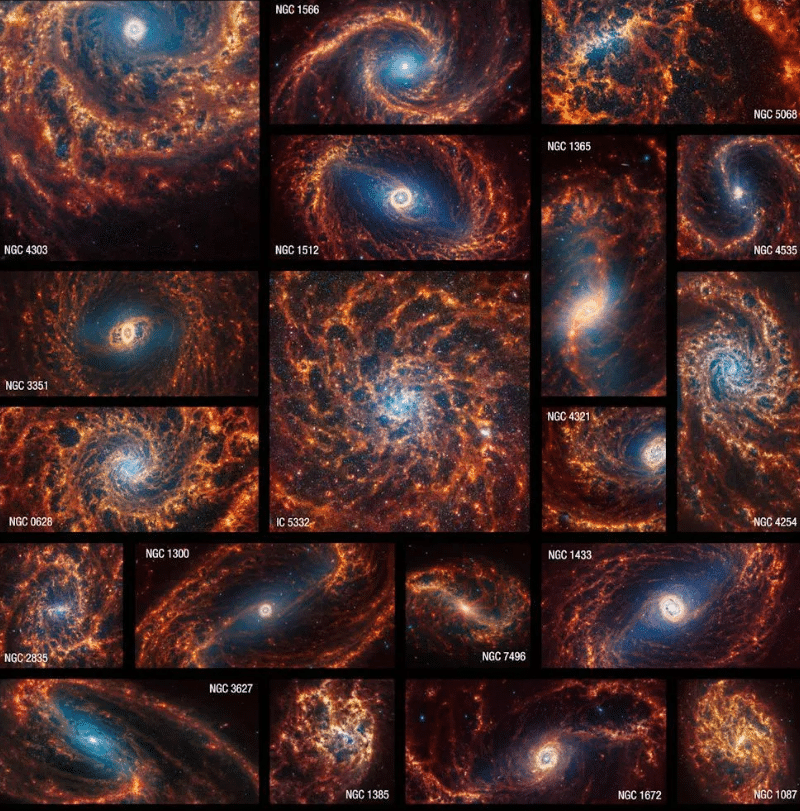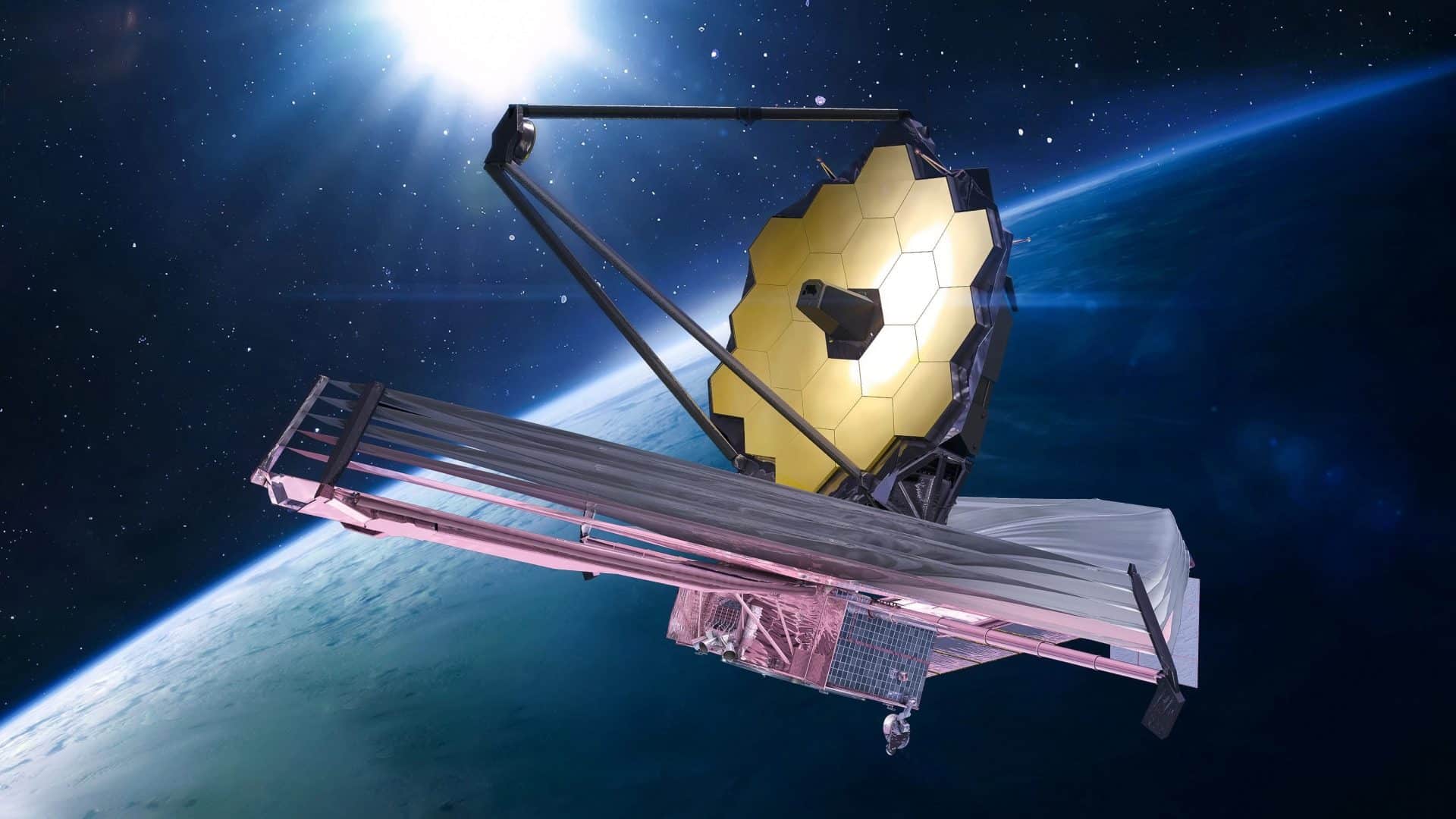Recent images taken by the James Webb Space Telescope (JWST) provide a detailed look at 19 spiral galaxies relatively close to the Milky Way. With exquisite detail, these images provide new clues about star formation as well as galaxy structure and evolution. This was announced on Monday (29) by scientists involved in the project called Physics of High-Angle Resolution in Nearby Galaxies (Phangs), who work at several famous astronomical observatories.
The closest galaxy among the 19 galaxies is NGC5068, located about 15 million light-years from Earth, while the farthest, NGC1365, is about 60 million light-years away. Spiral galaxies, which resemble huge weather vanes, are common in the universe, and the Milky Way is an example of this type.
The James Webb Space Telescope launched in 2021 and began collecting data in 2022, changing understanding of the early universe and providing stunning images of the universe. This observatory works mainly in infrared.
The new observations were made by a near-infrared webcam (NIRCam) and a mid-infrared instrument (Miri). These images reveal approximately 100,000 star clusters and millions, or even billions, of individual stars.

Oxford University astronomer Thomas Williams, who led the data processing, highlights the importance of this data for a new understanding of the early stage of star formation.
“We don't know much about this phase, not even how long it actually lasts, so this data will be vital to understanding how stars begin their lives in galaxies,” Williams said.
Half of the spiral galaxies have a straight structure called a bar, which extends from the center of the galaxy where the spiral arms connect.
“Galaxies form from the inside out, so they become increasingly larger throughout their lives. The spiral arms sweep in the gas that will become stars, and the bars funnel that gas toward the galaxy's central black hole,” Williams explained.
The images allow scientists to distinguish in detail the structure of the clouds of dust and gas in which stars and planets form. This can be done in galaxies outside the Large Magellanic Cloud and the Small Magellanic Cloud, which are galactic moons of the Milky Way.
Janice Lee, an astronomer at the Space Telescope Science Institute in Baltimore and the lead researcher on the new data, emphasized that the images are not only aesthetically impressive, but also tell an important story about star formation and the feedback cycle, which involves energy and momentum. By young stars in the space between them.
With information from CNN Brazil.

“Incurable thinker. Food aficionado. Subtly charming alcohol scholar. Pop culture advocate.”

:strip_icc()/i.s3.glbimg.com/v1/AUTH_59edd422c0c84a879bd37670ae4f538a/internal_photos/bs/2023/E/W/8PPh4iSA2xesn8mdBiSg/praca-relogio-106-17-foto-cecilia-bastos-17.jpg)



:strip_icc()/i.s3.glbimg.com/v1/AUTH_59edd422c0c84a879bd37670ae4f538a/internal_photos/bs/2024/Q/F/WBipAXRwqO8rdLAQtPnA/aranhas-esa.png)

More Stories
The new WhatsApp status system is attracting attention and promising to improve the user experience
Fallout 4 on PS5 is offered with PS Plus Extra
Nintendo is removing nearly 20 years of classic modding content